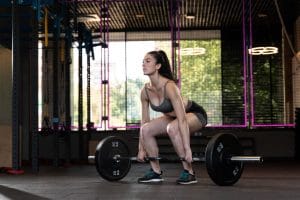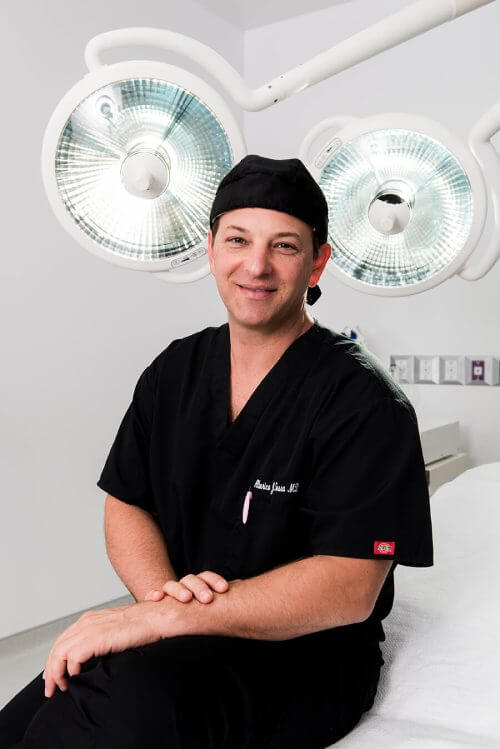One of the most frequently asked questions following breast augmentation is: “When can I safely return to my workouts? If exercise is part of your lifestyle, taking time off, even temporarily, can be frustrating. But giving your body time to heal is essential for protecting your results.
Breast augmentation is especially common among athletes and women who lift, run, or train regularly. Many fit or naturally petite women have less body fat, which can mean smaller breasts that don’t quite match their overall build. Others notice changes in breast volume after pregnancy or weight loss. For these women, implants help restore proportion while supporting their active lifestyle.
So what’s the right timeline for getting back to training? And how do you do it without risking complications? Here’s what to know.
Why Fitness-Focused Women Choose Breast Implants?
According to the American Society of Plastic Surgeons (ASPS), women aged 30–39 accounted for 38% of all breast augmentation procedures in 2023 (1). Many active women experience a loss in breast volume due to intense training, low body fat, or weight loss. This can lead to a chest that feels out of proportion with the rest of their body. Breast implants help restore that balance, enhancing natural shape and boosting confidence.
Can You Weight Train With Breast Implants?
Yes, weight training is possible after breast augmentation, once you’ve fully healed. Most surgeons recommend waiting at least 6 to 8 weeks before returning to upper-body strength training, according to the American Society of Plastic Surgeons (2). However, every patient heals at a different pace. It’s essential to get clearance from your surgeon before lifting or engaging in resistance exercises to avoid complications.
Workout Timeline After Breast Augmentation
Immediate Post-Surgery Recovery (Week 1)
- No lifting, bending, or strenuous activity.
- Light walking is encouraged to support circulation and reduce clot risk.
- Wear surgical bras or garments as advised by your surgeon.
- Prioritize rest, hydration, and prescribed medications.
- Expect swelling, tightness, and fatigue during this phase.
Weeks 2–4: Gentle Movement Only
- Avoid lifting, pushing, or pulling, especially with the upper body.
- No cardio, weight training, or high-impact movements.
- Maintain a balanced, nutrient-rich diet to support healing.
- Stay well-hydrated and get adequate sleep.
- Avoid alcohol, nicotine, and any non-approved supplements.
Weeks 4–6: Light Weight Training with Caution
- Resume light workouts only if cleared by your surgeon.
- Start with fewer reps and lighter weights.
- Avoid direct chest engagement (no bench press, pushups, etc.).
- Focus on form, not intensity.
- Allow rest days between sessions for proper recovery.
Beyond 6 Weeks: Returning to Full Workouts
- Gradually increase workout intensity under your surgeon’s guidance.
- Delay full chest exercises (bench press, pushups) for up to 12 weeks.
- Incorporate stretching, cardio, and light resistance first.
- Monitor for any unusual discomfort, tightness, or swelling.
- Keep your surgeon updated if you plan to change your routine.
What Exercises to Avoid (and For How Long)
Here are some of the exercises you should avoid, along with the timeline:
| Timeframe | Exercise Guidelines |
| Weeks 0-6 |
|
| Weeks 6-12 |
|
| After 12 weeks |
|
Supportive Bras: A Must-Have for Post-Surgery Training
Wearing the right support bra is essential when returning to physical activity after breast implant surgery. (3) During the early stages of recovery, your surgeon may recommend a compression bra to minimize swelling and support healing tissues. As you resume workouts, especially those involving movement or impact, a high-impact sports bra is crucial. It helps reduce bounce, stabilizes the implants, and protects against unnecessary strain on healing tissue. Always follow your surgeon’s guidance when transitioning between garments.
Implant Placement and Exercise: Subglandular vs. Submuscular
Implant placement can significantly impact how your chest looks and feels during physical activity, especially if you lift weights. Submuscular placement (under the chest muscle) often provides a more natural appearance and better soft tissue coverage. However, it may cause visible movement or distortion when the pectoral muscles contract, which can be a concern for women who regularly perform chest exercises.
On the other hand, subglandular placement (over the muscle) avoids this kind of distortion and typically allows for a shorter recovery period. This option may be preferred by bodybuilders or those who train heavily with their upper body. Each placement has its pros and cons, so it’s essential to discuss your workout habits and long-term goals with your surgeon to determine the best fit for your lifestyle.
Silicone vs. Saline Implants for Active Women
For women with athletic builds or low body fat, silicone implants are often the preferred choice (4) . They tend to feel more natural and are less likely to ripple or distort during movement. Saline implants, while safe and effective, may be more prone to visible wrinkling, especially in leaner patients where there is less tissue coverage. Your surgeon will help you choose the type best suited to your anatomy and activity level.
Do Breast Implants Change with Weight Loss?
Breast implants themselves do not change size or shape when you lose weight. However, the surrounding natural tissue can decrease, which may slightly alter how the implants appear. For women whose weight fluctuates or who are actively working to lose fat, implants offer a reliable way to maintain breast volume and shape through physical changes in the body.
Selecting Implant Size Based on Lifestyle
Your activity level plays a key role in choosing implant size. While larger implants can create a fuller look, they may interfere with certain workouts, especially high-impact or chest-focused training. In some cases, they can also contribute to back or shoulder discomfort. Moderate-sized implants often strike the best balance between aesthetics and function for women who stay active.
Healthy Habits That Support Recovery
The following habits can help support recovery:
- Eat a protein-rich diet to support tissue healing and muscle repair.
- Include anti-inflammatory foods like leafy greens, berries, and omega-3s.
- Stay well-hydrated to promote circulation and reduce swelling.
- Avoid alcohol and smoking, which can delay healing and increase complication risk.
- Take all prescribed medications exactly as directed by your surgeon.
- Get adequate sleep to allow your body to repair and recover effectively.
- Avoid over-the-counter supplements unless cleared by your provider.
Be sure to share your fitness routine, goals, and activity level during your consultation. This helps your surgeon recommend the best implant size, type, and placement to fit your body and support your lifestyle.
To learn more and schedule a consultation, call us at 941-923-1736. You can also reach out online via Price Simulator, chat, or contact form.
Frequently Asked Questions
When can I start exercising again after breast augmentation?
You can usually begin light walking within a few days. Most patients can return to low-impact workouts after 2–4 weeks and full workouts after about 12 weeks, with your surgeon’s clearance.
What workouts should I avoid after getting implants?
Avoid chest-focused exercises (like push-ups, bench press), running, jumping, and heavy lifting for the first 6 weeks. These movements can strain healing tissue and shift implant placement.
Can I do chest exercises like bench press or push-ups with implants?
Yes, but only after full recovery, usually 8 weeks or longer. If your implants are placed under the muscle, you may need to modify the technique or reduce weight to avoid long-term stress on the muscle.
Will breast implants affect my range of motion or flexibility?
Not long-term. You may feel tightness or limited motion during early healing, especially with submuscular placement, but this usually resolves with time and physical therapy if needed.
Are there specific implant types better suited for athletic women?
Yes. Smaller, lighter implants (often silicone) are preferred for active women to reduce bounce and discomfort. Tear-drop or anatomic shapes may offer a more natural look for lean body types.
Does implant placement (under vs. over the muscle) affect my workouts?
Yes. Submuscular implants can cause more post-op soreness and may affect chest exercises. Over-the-muscle placement can preserve chest strength but may be more visible on very lean frames.
How do I protect my implants while lifting weights?
Wear a high-support sports bra, avoid overtraining your chest, and use proper form. Gradually rebuild strength and consider working with a trainer familiar with post-surgical limitations.






